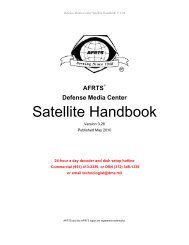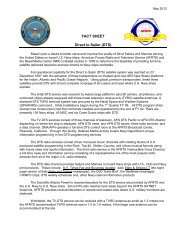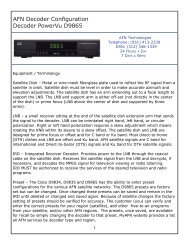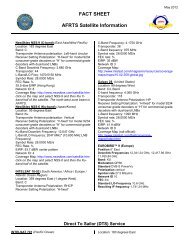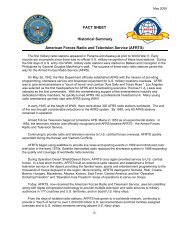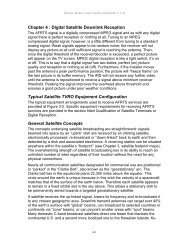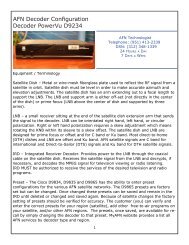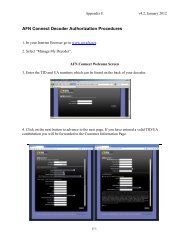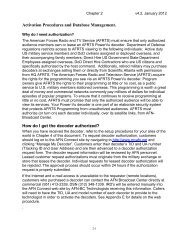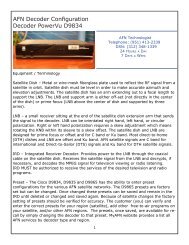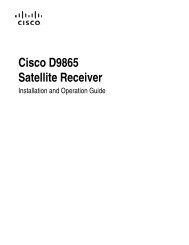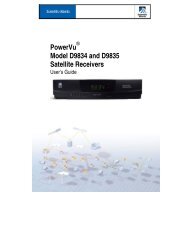AFRTS Defense Media Center Satellite Handbook
AFRTS Defense Media Center Satellite Handbook
AFRTS Defense Media Center Satellite Handbook
Create successful ePaper yourself
Turn your PDF publications into a flip-book with our unique Google optimized e-Paper software.
<strong>Defense</strong> <strong>Media</strong> <strong>Center</strong> <strong>Satellite</strong> <strong>Handbook</strong> V.3.26<br />
Figure 3-2 Connecting an IRD to a monitor or TV receiver<br />
The integrated receiver/decoder (IRD) is a primary link to <strong>AFRTS</strong> satellite<br />
broadcasts. Without a properly authorized and configured IRD it is not possible to<br />
use or access any of the television or radio programming or data services<br />
provided by <strong>AFRTS</strong>. The compression decoder is designed to receive and<br />
decode the satellite signal and then to demodulate, decompress, and decrypt the<br />
available and authorized programming services. Figure 3-2 shows typical block<br />
diagrams of the connection between a satellite antenna, a PowerVu IRD, and the<br />
users own equipment. All PowerVu IRDs are designed to be connected to a<br />
satellite Frequency (RF) signal that is in the L-band frequency range between<br />
950 and 1450 MHz. However, the satellite technology in use today does not<br />
allow for transmissions back to earth in that frequency range. Users wishing to<br />
receive any of the <strong>AFRTS</strong> satellite signals directly must outfit their antennas with<br />
a Low Noise Block Converter Amplifier, or LNB. The signal from the LNB output<br />
is connected directly to, in most cases, the input of the IRD and, as Figure 3-2<br />
shows, the video and audio outputs from the IRD are connected directly to the<br />
users equipment. The user then simply changes the IRD to a virtual channel, and<br />
provided the IRD is authorized by <strong>AFRTS</strong>, receives the television and radio<br />
services of that virtual channel much like any cable or direct-to-home television<br />
service in the world.<br />
3-4



